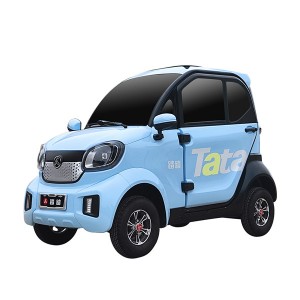With the increasing global attention towards environmentally friendly modes of transportation, low-speed electric vehicles are gradually gaining traction as a clean and economical means of travel.
Q1: What is the market outlook for low-speed electric vehicles in Southeast Asia and Europe?
In Southeast Asia and Europe, the market outlook for low-speed electric vehicles is promising due to the growing demand for eco-friendly modes of travel. Government support policies for environmentally friendly transportation are gradually strengthening, providing a conducive environment for the development of low-speed electric vehicles.
Q2: What are the advantages of low-speed electric vehicles compared to traditional automobiles?
Low-speed electric vehicles boast advantages such as zero emissions, low noise, and cost-effectiveness. Not only do they help reduce environmental pollution, but they also decrease traffic noise, thereby enhancing the quality of life for urban residents. Additionally, the maintenance costs of low-speed electric vehicles are typically lower, making them more consumer-friendly.
Q3: What are the primary markets for low-speed electric vehicles in Southeast Asia and Europe?
The primary markets include urban commuting, tourism site tours, and logistics and delivery services. In urban commuting, low-speed electric vehicles serve as an ideal choice for short-distance travel. In tourism sites, they are often used for tourist transportation services. Their flexibility and eco-friendly nature also make them highly favored in logistics and delivery services.
Q4: Are charging facilities for low-speed electric vehicles widespread in these regions?
Although there is still some deficiency in charging infrastructure, the proliferation rate of charging facilities is gradually increasing with increased investments from governments and businesses. Particularly in urban core areas and major transportation hubs, charging facilities coverage is relatively good.
Q5: What government policies support the development of low-speed electric vehicles?
Governments have implemented various measures to promote the development of low-speed electric vehicles, including providing vehicle purchase subsidies, waiving road usage taxes, and constructing charging facilities. These policies aim to lower the cost of vehicle ownership, enhance user experience, and drive the widespread adoption and development of low-speed electric vehicles.
Low-speed electric vehicles hold immense market potential in Southeast Asia and Europe, with their environmentally friendly and cost-effective features gaining favor among consumers. Government policy support and increasing market demand will further propel the growth of the low-speed electric vehicle industry. With the improvement of charging infrastructure and technological advancements, low-speed electric vehicles are poised for even greater success in the future.
- Previous: How to Choose the Right Electric Tricycle: Exploring the Top Brand CYCLEMIX of the China Electric Vehicle Alliance
- Next: Electric Motorcycle Conversion Kits Unlocking Riding Potential
Post time: Apr-19-2024






